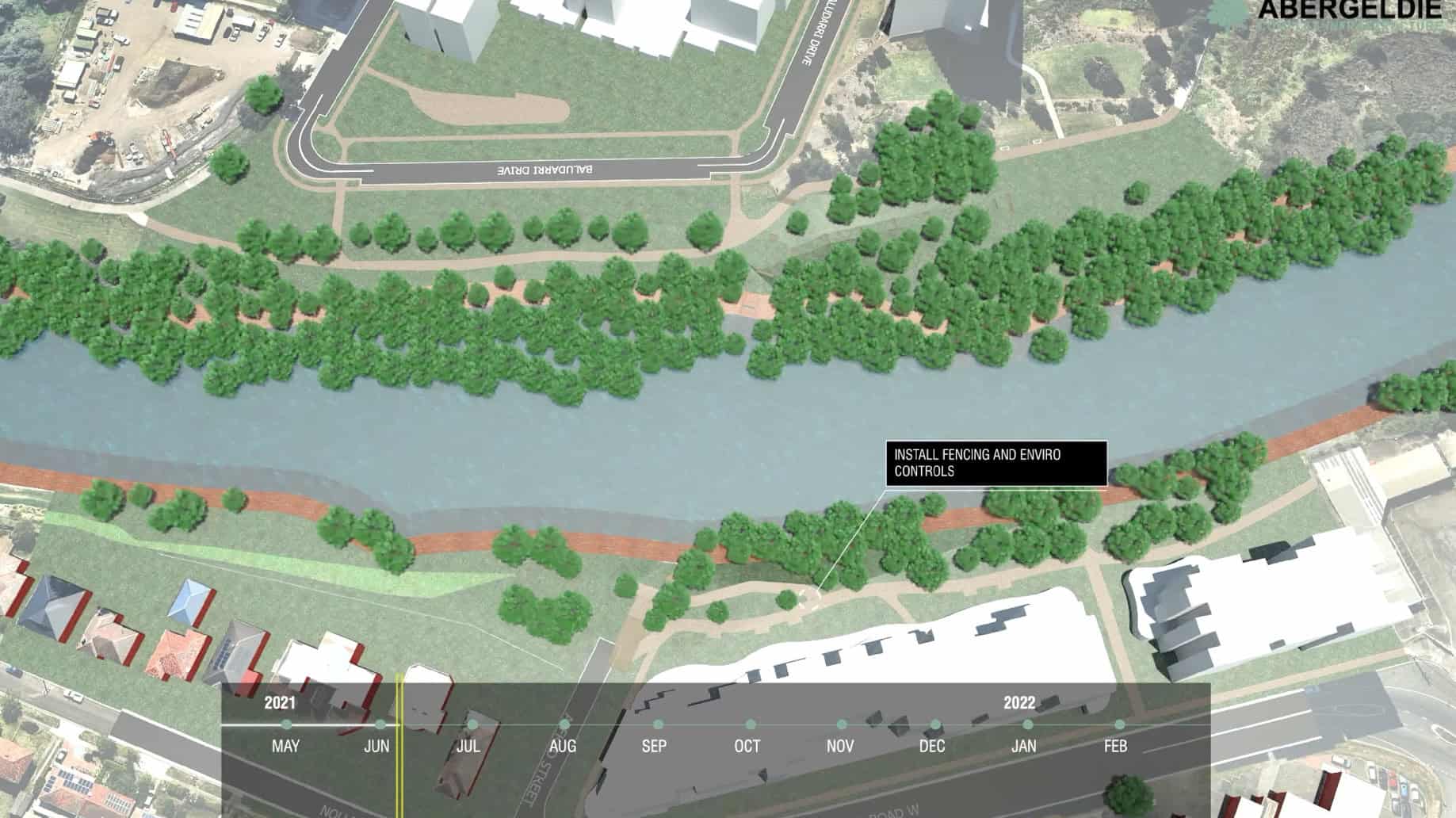The challenges facing electric utilities
The challenges facing the electric utility sector are well known: rising demand, aging assets, and workforce shortages. If electric utility companies and engineering firms don’t fix these issues, it will negatively impact businesses, families, and entire economies, as well as their quality of life. Addressing these challenges is critical to maintaining the power grid resilient and reliable.
With AI being a trending topic, how do the two intersect? Recently, Bentley Systems hosted a panel to discuss how industry can overcome these issues “Wired for the Future: AI, Automation, and the Next-Gen Grid” at our annual Year in Infrastructure conference.
Brad Johnson, director of electric utilities at Bentley, moderated the panel that included:
- Savannah Altvater, head of distribution and markets facilitation at Eurelectric, a federation of the European electricity sector
- Stephanie Gossman, planning and policy general manager for transmission and distribution at Georgia Power, an American electric utility company
- Mark Tablante, transmission and distribution design technology director at Burns & McDonnell, a global engineering firm
The panelists shared their challenges and how they are using AI, automation, and digital collaboration to transform how utilities plan, operate, and adapt.
Treating data like a valuable asset
Electrical equipment is an asset, but data and technology are considered valuable assets as well.
Utilities must ensure that teams across locations and functions can access, share, and learn from this data. Using this shared data helps people develop valuable insights and make better decisions. Data becomes a “common language” that helps teams communicate and learn from each other.
Tablante shared that it’s important to gather data and make it easily available across regions. He noted that focusing on data and workflow helps solve problems, no matter the region.
How Georgia Power improved grid reliability with data insights
Gossman shared how Georgia Power used advanced data analysis to improve reliability. The company used data to identify the worst-performing distribution lines and decide where to invest in modernizing its systems.
 YII Panelist Savannah Altvater
YII Panelist Savannah Altvater“What we’ve seen so far is a 50% improvement in the last six years that the program’s been running,” she said. “It’s 50% improvement for reliability, both in duration and frequency of outages for customers along those circuits, which used to be some of our worst performing. It improved the customer experience and transmission.”
Data and digital technology also influence how electric utilities talk with government regulators and policymakers, especially in complex, multinational markets like Europe. Altvater noted that “we found in our study, Wired for Tomorrow, that the technology is there and we’re already starting to use it. But regulators need to recognize how valuable it is for the system and customers, and how it impacts the future of the grid. Utilities also need to change how they work, moving from using paper to using more digital systems.”
How AI and automation are transforming utility forecasting and grid design
The panelists agreed with Tablante that it’s essential to adopt AI strategically—not just adopt it, but use it in smart ways.
AI plays a dual role in the energy sector: driving energy demand (like data centers) and improving utility operations, production, maintenance, and safety. It is also changing how utilities prepare for and respond to challenges.
Automated storm response and restoration
AI can predict storm damage by modeling historical data and weather patterns. This helps utilities answer questions like:
- How many power outages will there be?
- Where will the outages most likely happen?
- How bad will they be?
Gossman explained that an area that Georgia Power strategically adopted AI is in storm response and restoration. This was to improve the utility’s ability to serve the southeastern U.S. customers who experience many thunderstorms and hurricanes. Using data analytics, this prediction allows them to stage materials, people, and equipment proactively. The main goal is to give customers more accurate and faster estimated times for power restoration. This process affects Georgia Powers’s workflow and helps them improve customer satisfaction.
Designing for AI-driven data center loads: A new grid challenge
Utilities must also design the grid to handle massive new electricity users, such as large data centers that support AI. According to IEA, demand from data centers worldwide is expected to more than double by 2030 to around 945 terawatt-hours (TWh). (IEA).
 YII Panelist Stephanie Gossman
YII Panelist Stephanie GossmanUtilities are concerned not only with capacity to serve, but also with reliability. This challenge requires new design thinking.
Gossman pointed out that AI-related power loads are unique because they can be highly unstable, exhibiting significant oscillations. “It’s a challenge to ensure that we have a high level of power quality for all existing customers. We need to consider new flexible designs that allow adding special mitigating power electronics equipment within the substation footprint, to maintain high power quality for everyone.”
Collaboration and automation are reshaping the power grid workforce
The data collected is only useful if it is shared. Digital collaboration tools help to break down the walls between teams, companies, regions, and regulators. This is where automation makes things much more efficient.
Tablante noted that engineering and utilities often work separately in silos within their workflows. Then only put everything into one model at the very end. By working together, utilities, engineering firms, and regulators can create a power grid that is resilient and ready for the future.
Automated design
Altvater likes working with electrical design software, such as OpenUtilities Substation+ that automates tedious tasks because it allows them to work more efficiently and makes people’s jobs better. “For example, if AI can review all the images and designs of an existing structure, engineers can quickly go in and make the needed changes while working with their team.” she said, “For some of our Eurelectric members who work internationally, that’s super useful to also compare the structures.”
Upskilling for the AI era
The industry is experiencing a shortage of skilled engineers as people leave the workforce. The shift to AI and automation is not about eliminating people; it’s about evolving their roles. All panelists stressed that jobs are becoming increasingly technology-focused, and that utilities must invest in upskilling their employees.
 YII Panelist Mark Tablante
YII Panelist Mark TablanteTablante shared a clear message: “AI is not going to replace people; AI will replace people who don’t use AI. His engineering firm wants their staff to understand that AI is here to stay, and we want to train them. The goal is to use AI and tools like large language models to get the results they really need.” He added that AI will even help smaller utilities compete with larger companies.
Altvater also noted that it will take time and training and that most of the electric utilities that she works with are already investing in their people. They want them to have fulfilling careers and gain transferable skills.
Moving forward together to build a smarter, resilient grid
Our panelists shared important lessons on how AI, automation, and digital collaboration are transforming the way that they achieve reliability improvements, accelerate project efficiency with automated design tools, and enhance collaboration.
As stakeholders, the discussion is focused on how to use AI, data, and automation in smart ways to effectively achieve the greatest impact. The future of energy looks promising when we accept this change, invest in people and technology, and work together to build a reliable, next-generation power grid.
Bentley’s goal is for AI to help infrastructure engineers, not replace them. Explore how Bentley’s electric utility solutions help utility companies and engineering firms improve collaboration, streamline grid design, and future-proof operations with AI and automation.



